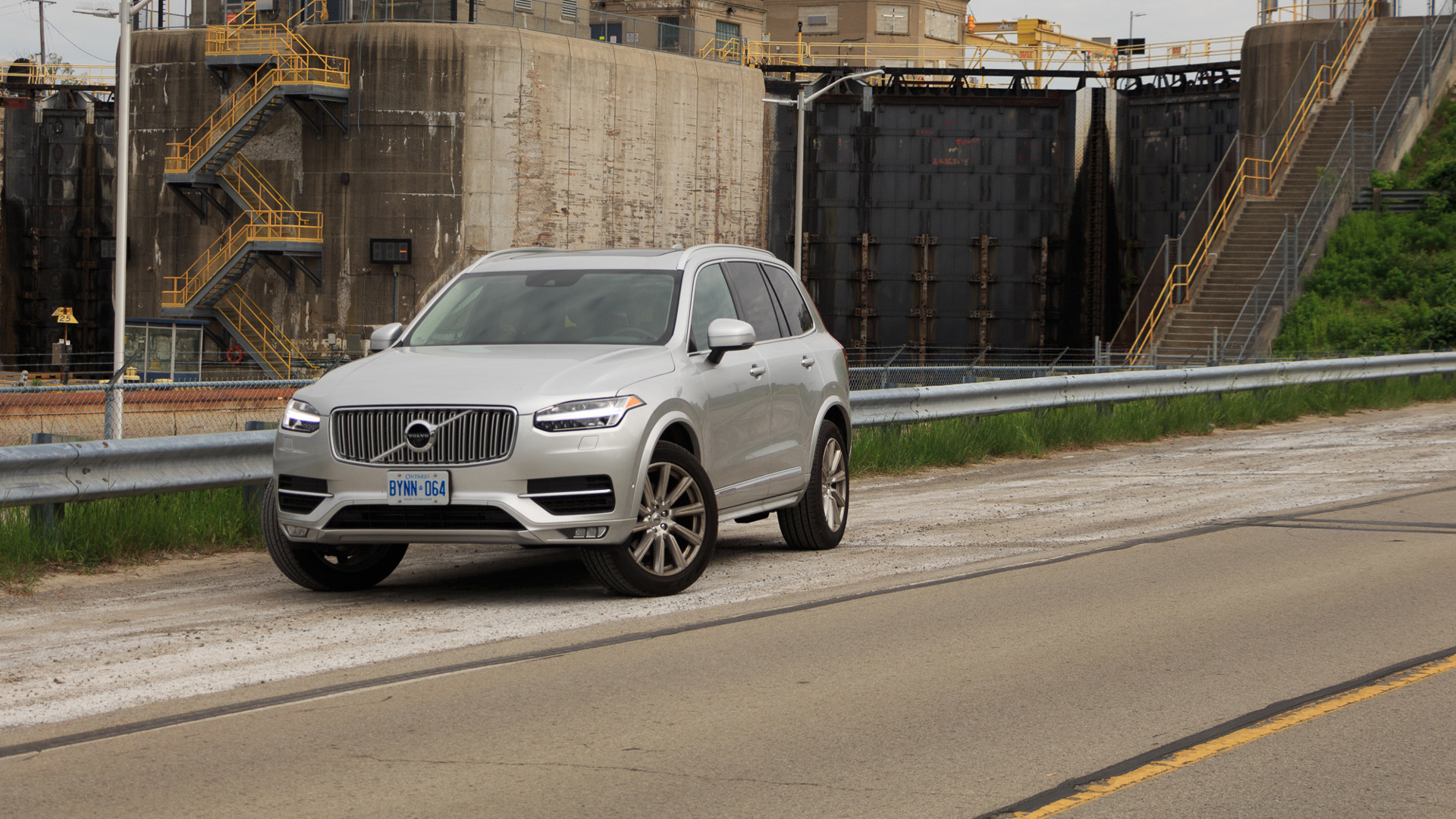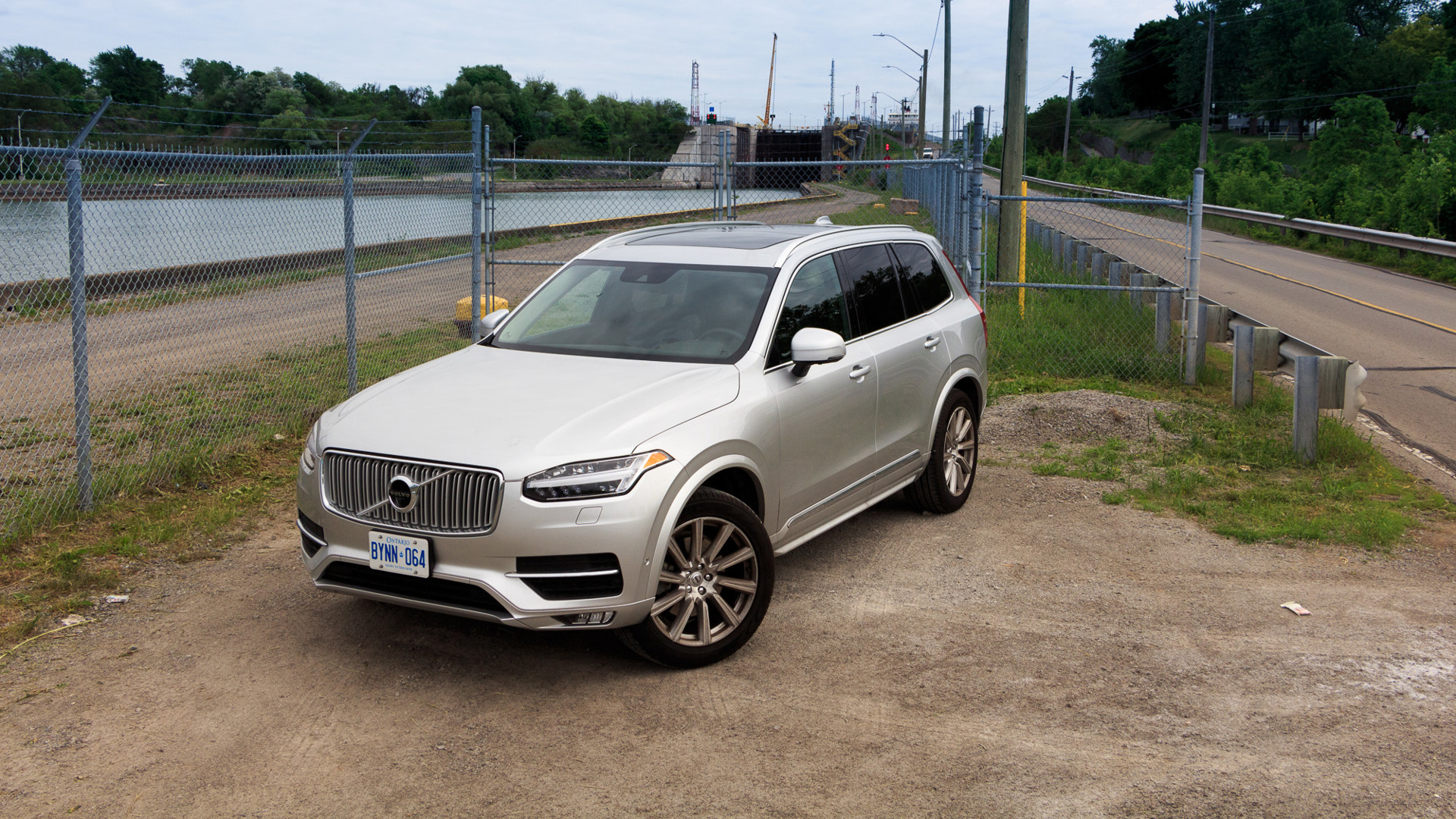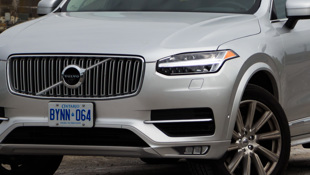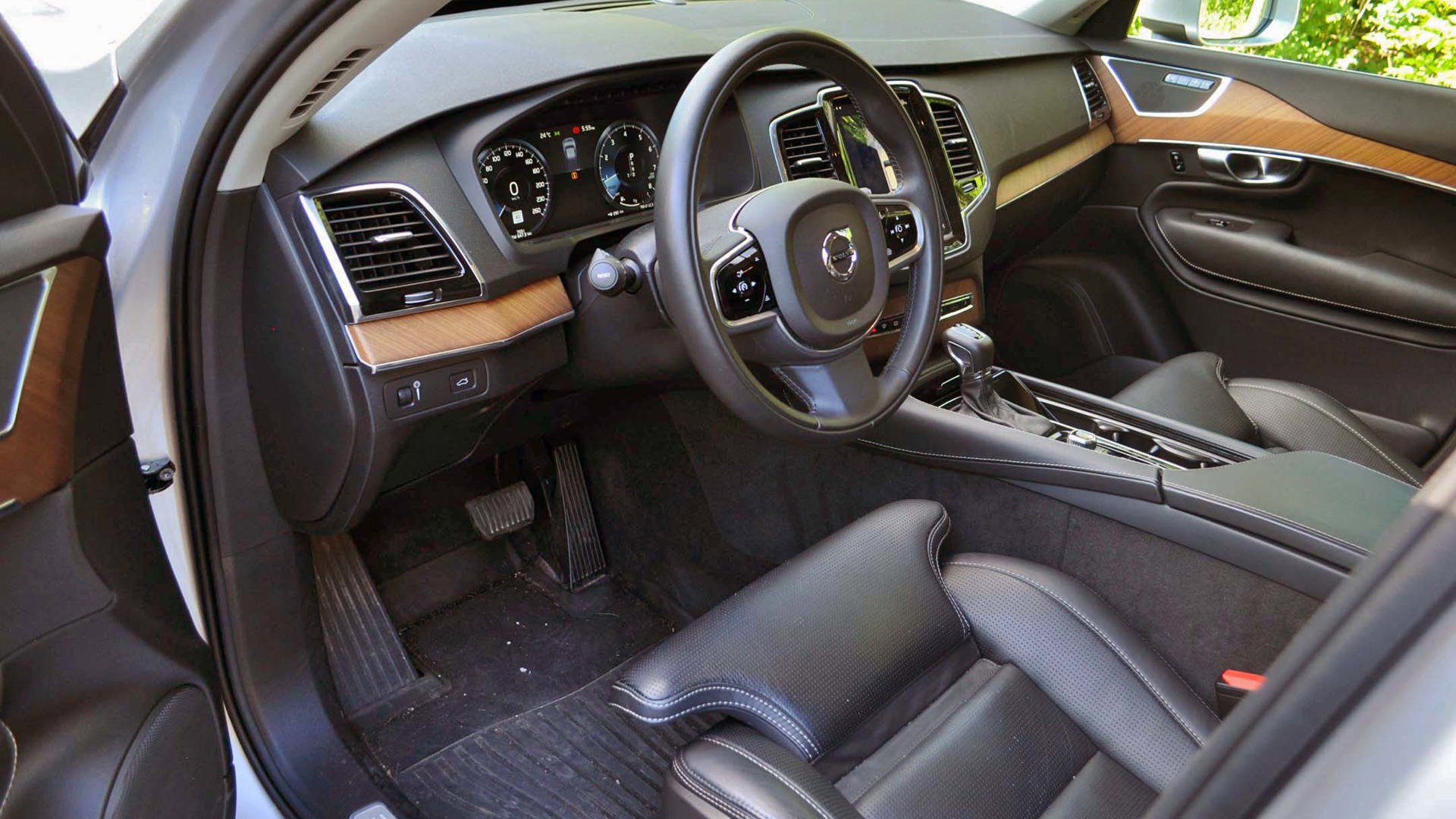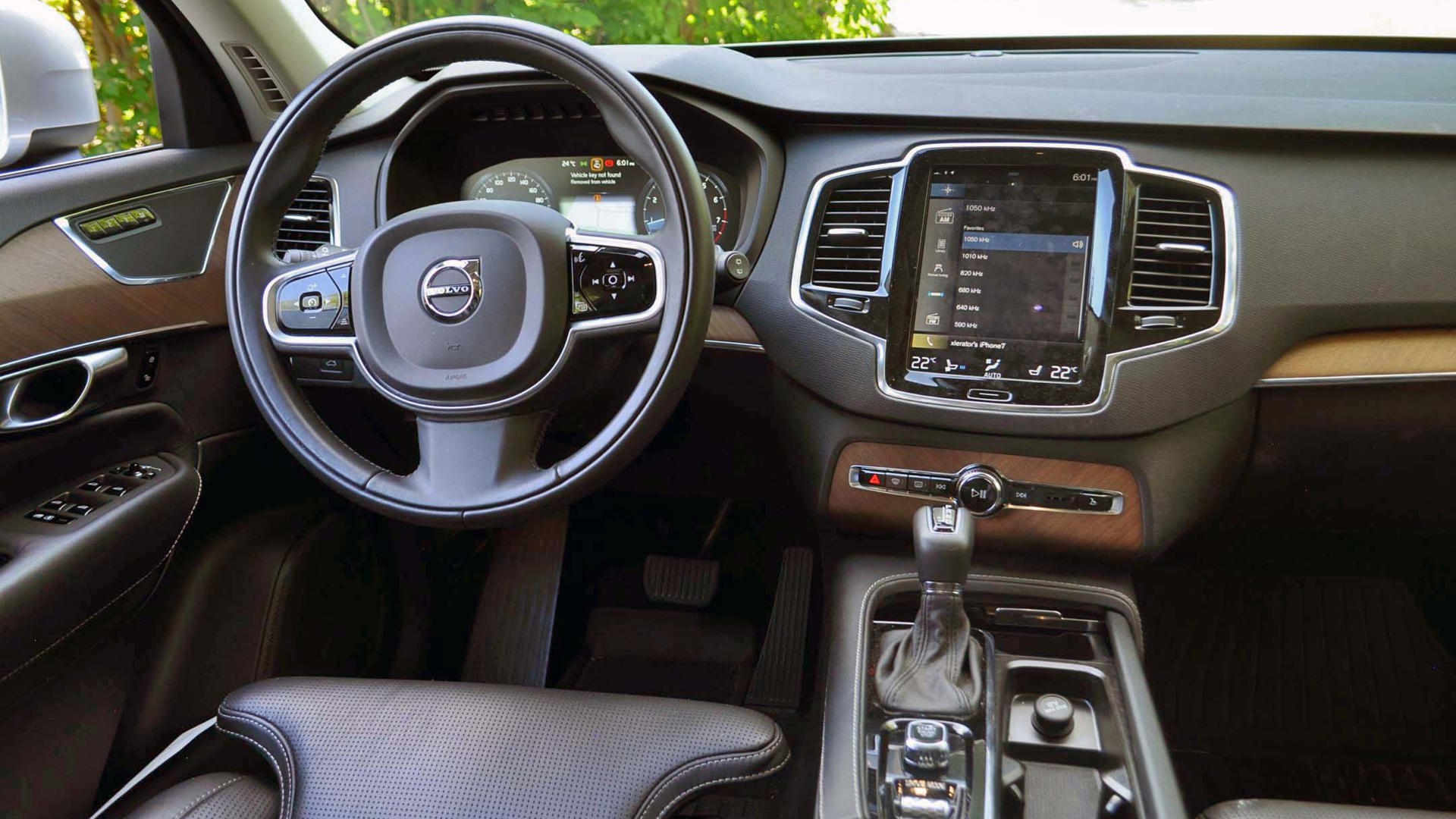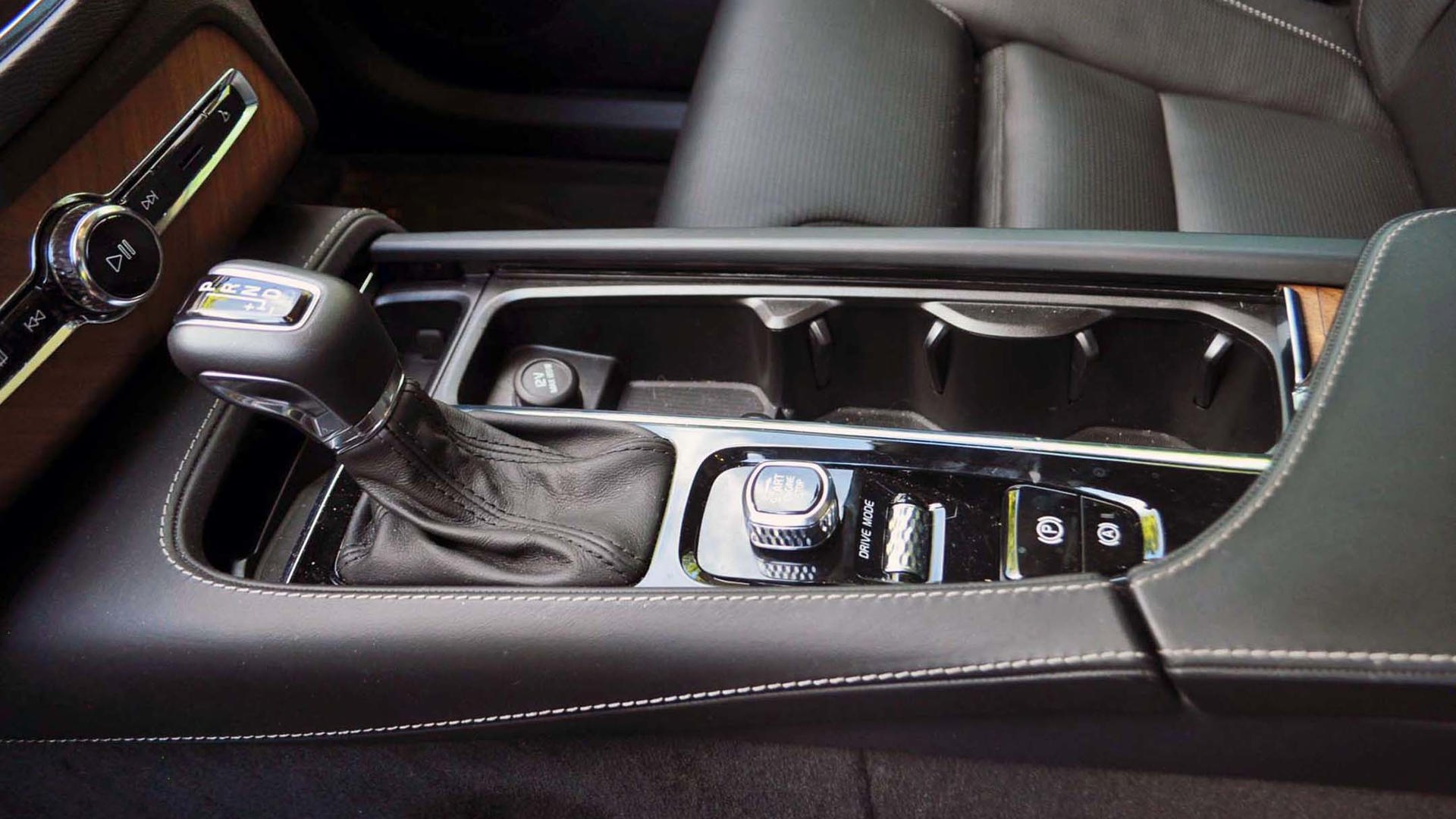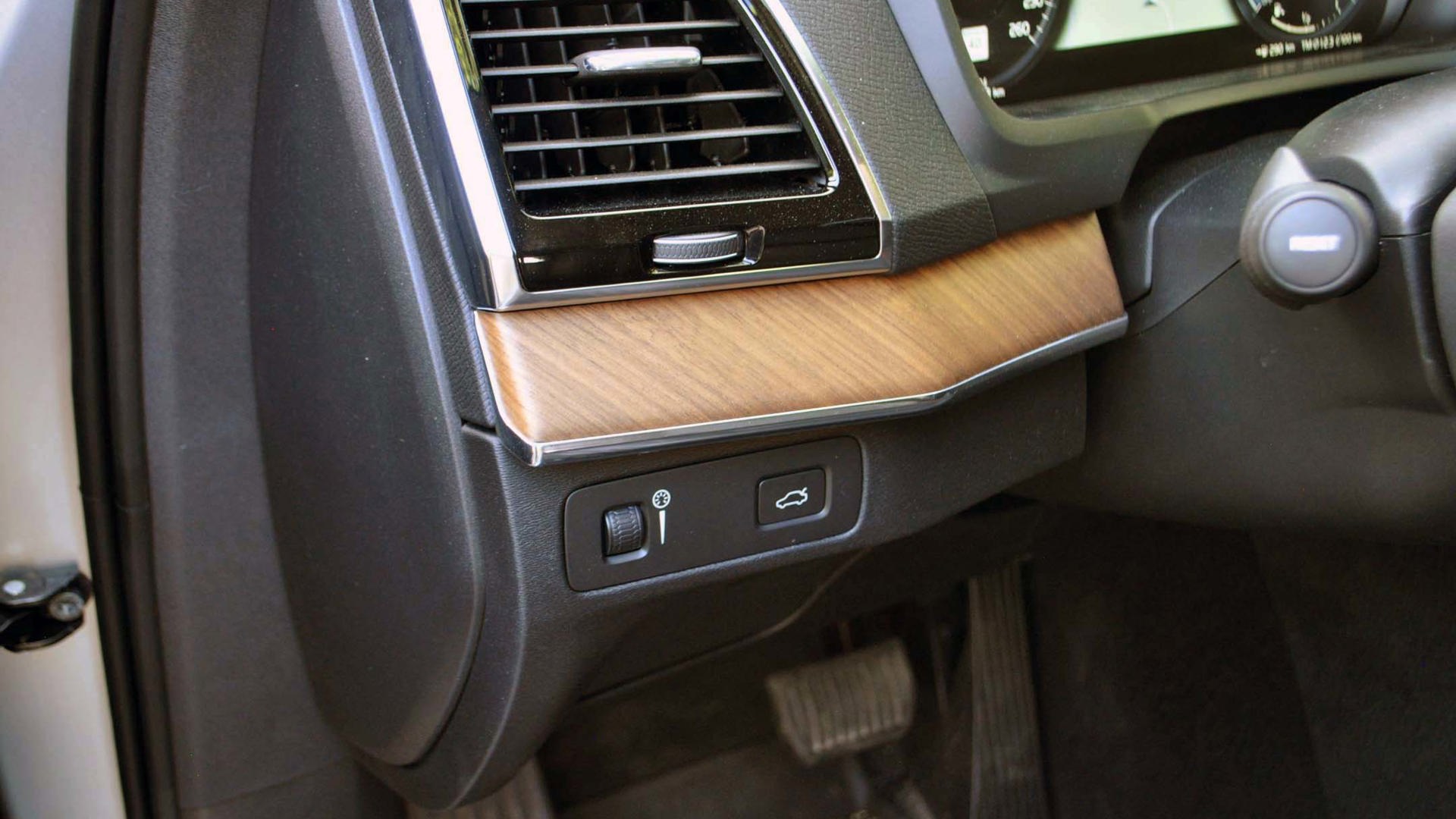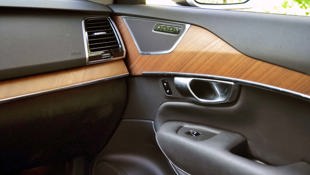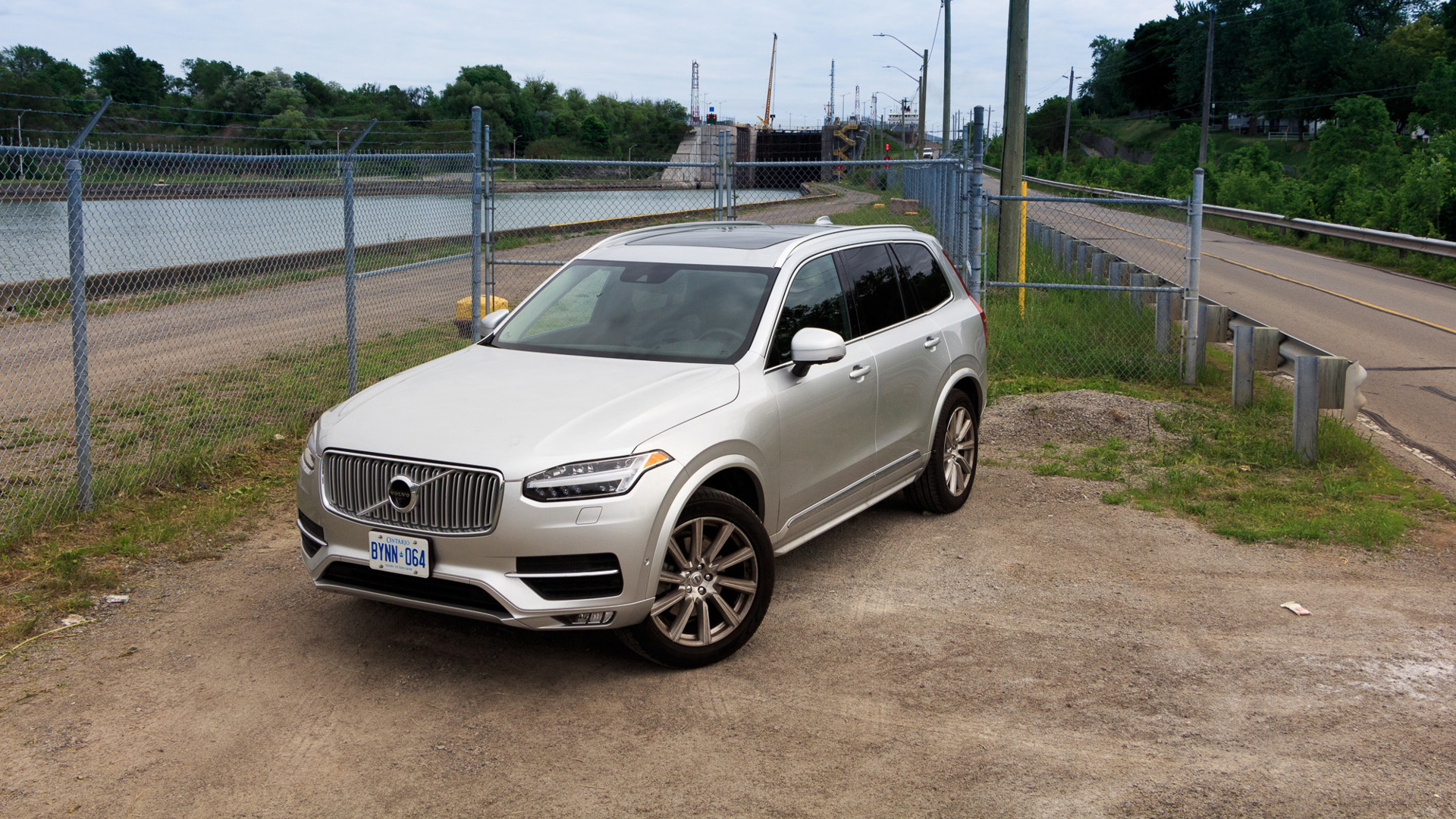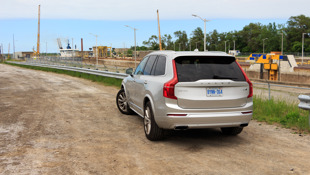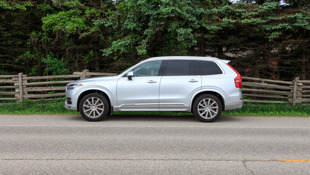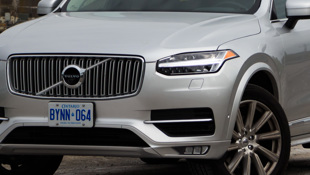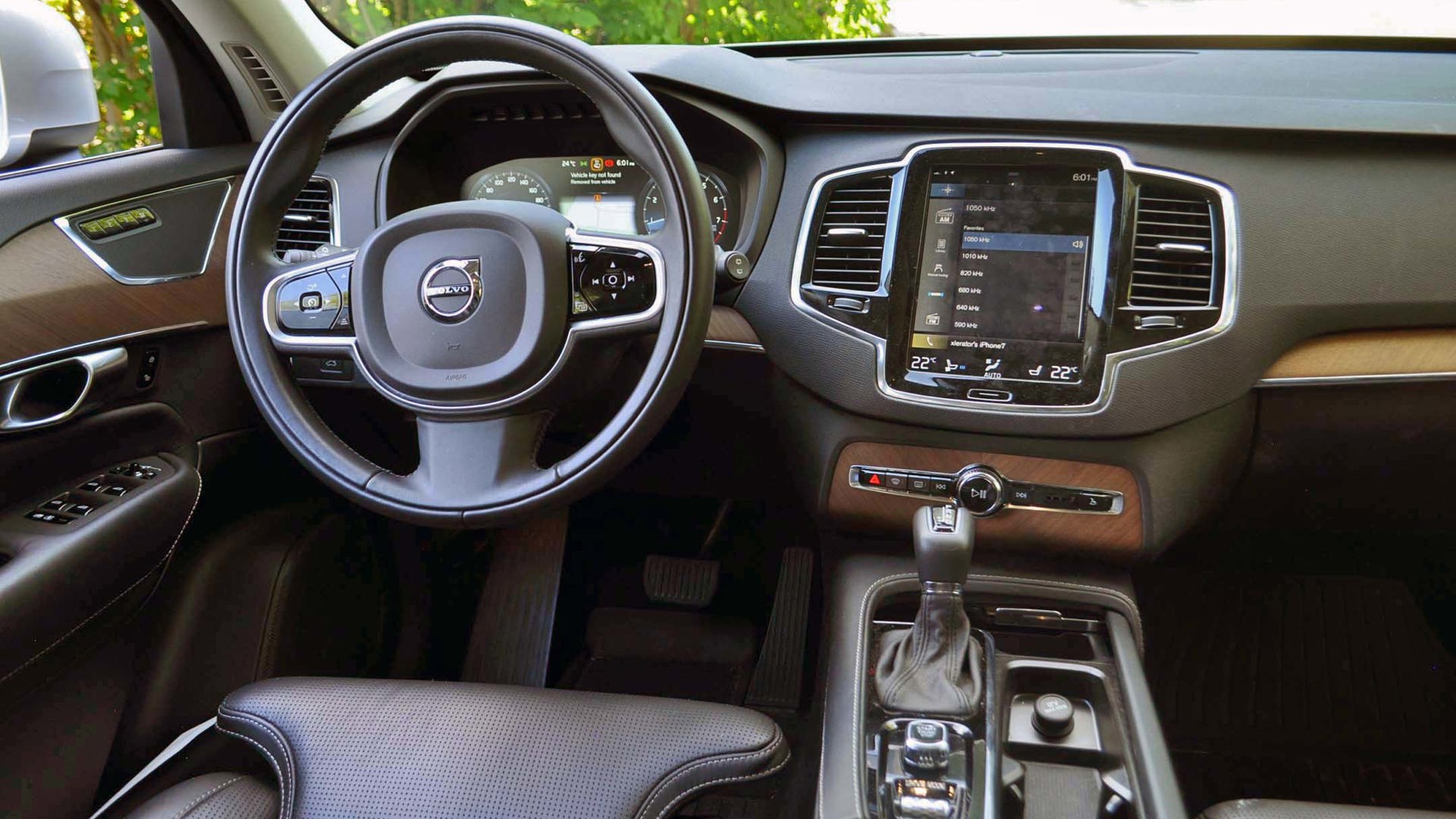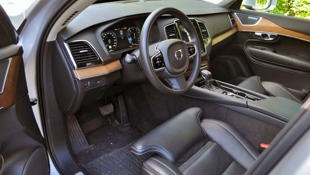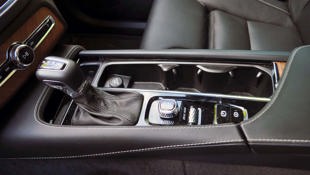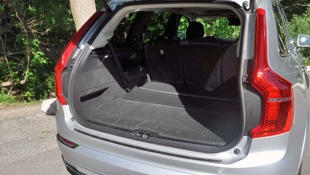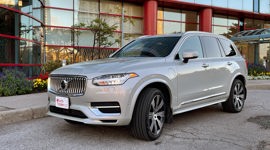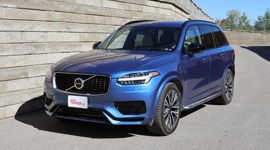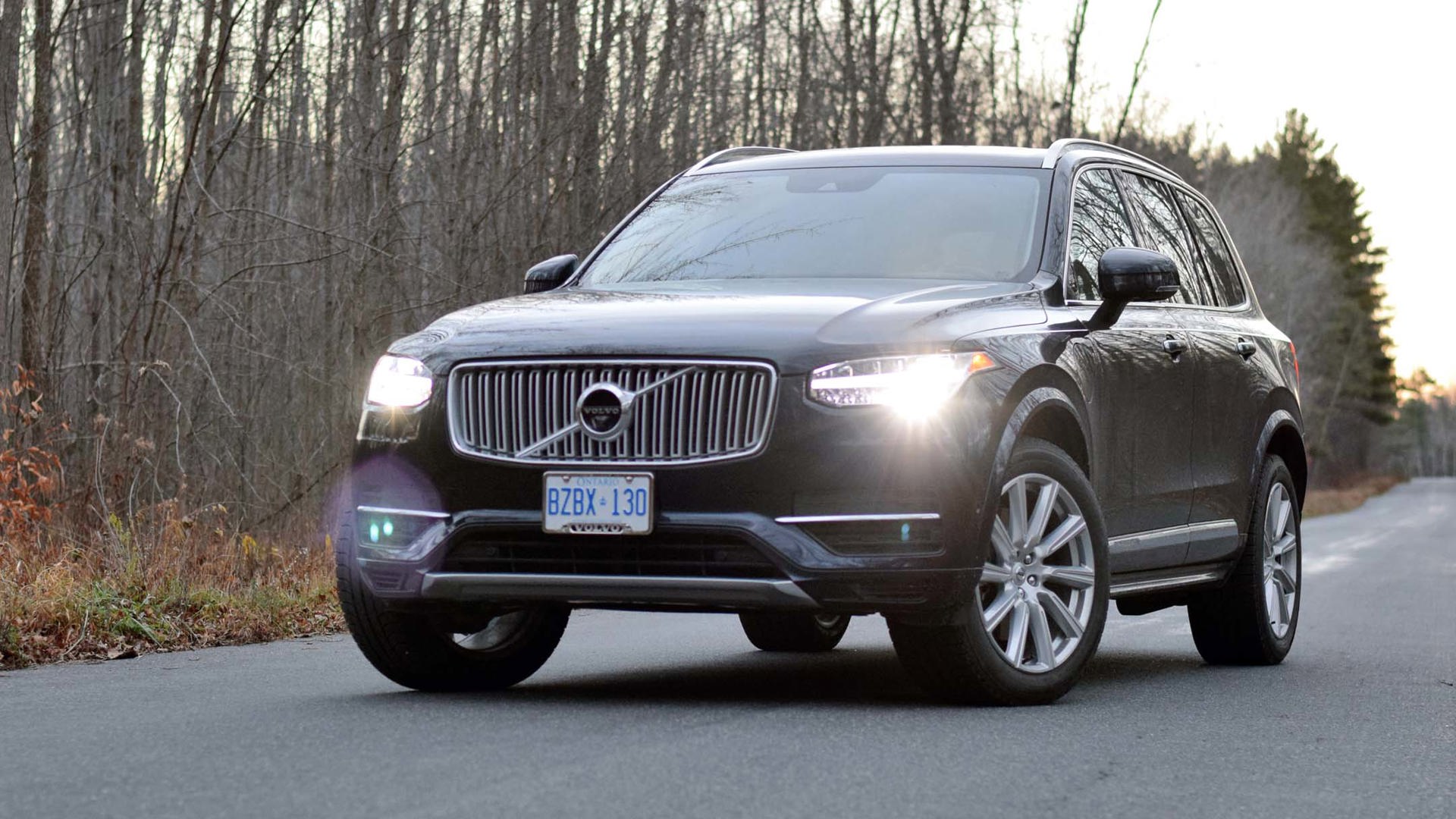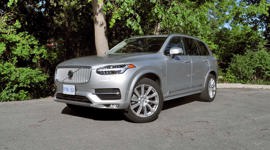A family celebration meant a trip to southern Ontario and the chance to spend some time behind the wheel of the autoTRADER.ca long-term Volvo XC90 tester. It was the 70th wedding anniversary for my paternal grandparents, which means they were married 11 years before Volvo pioneered the three-point seatbelt in cars. A vehicle like this, that can even park by itself, would have been almost beyond science fiction back then.
Instead of a turbo-four, your right foot thinks it’s just a big V6
Party duties meant that I spent much of my time with the crossover shuffling more people and more stuff than I would in a normal week, making it a more than fitting test for this family hauler. It also gave me the chance to enjoy the Greater Toronto Area traffic. A bit of a change from my usual rural Nova Scotia driving loops, where traffic means two pickups stopped so the drivers can chat.
The first thing that surprised me about the XC90 was the driver’s seat. It doesn’t look like the cushy seats that you’re used to in cars and especially crossovers. Sit down, and it feels surprisingly firm. I was a little nervous about my near-future comfort before I sat down. With the adjustable lower bolster (and a big thanks from the long-legged to every automaker that installs these) extended, it doesn’t look like there is much padding for your backside at all.
But these are some excellent chairs, among the most comfortable I’ve sat in, car or otherwise. A full day of sitting in traffic on the QEW heading toward Niagara Falls and back and I’m feeling fresher than I was before getting in the Volvo. With the easily adjustable bolsters and lumbar, almost any body type should be able to find their comfort zone. My only issue with them was that the adjustable lumbar re-inflated itself every time I got in. So the routine was to get in, buckle up, turn the strange but also cool start knob, and then deflate the lumbar. Every time.
The rear seats were similarly shaped and cushioned, giving back-seat passengers a comfy time. Where the rear seats lacked was in head- and legroom. I know that my 6'5" and 6'7" cousins aren’t exactly what you would call average height, but I do expect that the front and middle row seats should be adjustable in such a way to let them both fit comfortably. Their own family haulers are much smaller than this, and they fit into those and other compact crossovers just fine. In order for either to sit in the middle row, the front seat had to be pushed forward so far that neither could fit. Knees in the dash, and knees in the seatback. Headroom in the third row, and the awkward climb past the middle row to get back there, meant that putting one person in each rear seat wasn’t an option. Even for normal-size passengers, the third row is a tight squeeze.
Behind those seats, there was plenty of space for our large suitcases and carry-on bags. Plus, when called into duty to help transport the catering, the rubber mats helped keep any cake and fruit salad spills at bay. Cargo space with all the seats up is good, and with them down is near the top of the class, which made the lack of passenger space even more of a surprise.
Volvo has been on a roll with their interior design lately, and the XC90 is no exception. Turning the 9.0-inch touchscreen to portrait orientation is an unusual but inspired choice, and it helps make the system easier to use. The Sensus Connect system is one of the only systems that replaces all of the dashboard knobs with on-screen touch buttons where it actually works. The system takes a few minutes to figure out, and I recommend a look through the manual, but it’s well worth your time.
There are just three main screens. One controls the active safety features and the surround view cameras, one shows you infotainment and navigation info, and the third manages applications like Android Auto and Apple CarPlay, as well as showing you driver performance and car info. The big home button takes you back to one of those three screens and a swipe takes you to the one you need. Climate controls are on the bottom of the screen, and the tall screen means that everything fits. Trying to find the right control while you’re trying to deal with 15 lanes of traffic in a strange area isn’t what you’d call fun, but here it’s at least easy.
The XC90 has Volvo’s Pilot Assist II semi-autonomous driving system. It’ll keep you in the centre of the lane, and follow the curve of the road, but this type of “almost but not quite” robo-drive doesn’t make much sense to me. You still need to keep a hand on the wheel, but it’s not really steering. So you either keep your hands on it normally and fight with the wheel, hang your hand off the side which tires your arm and pulls the car that way, or keep your hands off until it beeps at you (don’t do that one). Whichever way you pick, doing your own steering is easier – but the system did do a good job of following the road and keeping me centred in the lane.
The adaptive cruise control, though, works great. It’ll do stop-and-go traffic, but if you stop long enough for the engine to shut off then you’ll have to give the gas a tap to restart, at which point it will resume adaptively cruising. Which isn’t an issue, and it changes your whole world when you’ve been sitting 10 minutes while other drivers rubberneck that accident on the other side of the divided highway.
This is the T6 version of the XC90, which means that it uses a 2.0L four-cylinder that gets a unique combination of turbo- and supercharging. The supercharger spins up from low RPM and makes boost right away. Once the turbo spools, the supercharger gets bypassed. That means power and torque all the time. It makes 316 hp and 295 lb-ft of torque, but the off-idle torque makes it feel more powerful. Instead of a turbo-four, your right foot thinks it’s just a big V6. The stop-start system shuts it off smoothly, even before you stop moving. I did notice that if I restarted without stopping, like coasting up to a light that’s about to turn green and then accelerating when the light changed, it usually gave me a bit of a head snap.
I used that power often – it’s not really an option when navigating the wide highways around Toronto. Merging and lane changing are much easier when you have a heavy foot. Despite that, I managed a very impressive 9.1 L/100 km, with the computer and pump giving me the same figure. It’s much better than the 10.3 combined rating of this car. That’s with a few hours of stop-and-go traffic, city driving in Toronto and the Kitchener–Waterloo area, and a bit of rural highway. Not exactly the kind of driving to normally return high mileage numbers.
Not everyone who has spent time in the XC90 has managed the same fuel economy figures as me, though. Before I got it, the average was 11.3 L/100 km. The tank after mine was again back at around 11.3. That’s premium fuel, which the XC90 requires, and the good stuff hasn’t exactly been cheap in Ontario lately.
| Engine Displacement | 2.0L |
|---|---|
| Engine Cylinders | 4 |
| Peak Horsepower | 316 hp @5,700 rpm |
| Peak Torque | 295 lb-ft @ 2,200 rpm |
| Fuel Economy | 11.5/8.8/10.3 L/100 km city/hwy/cmb |
| Cargo Space | 368 / 2,427 L seats down |
| Model Tested | 2018 Volvo SC90 T6 AWD Inscription |
| Base Price | $69,950 |
| A/C Tax | $100 |
| Destination Fee | $2,015 |
| Price as Tested | $78,415 |
|
Optional Equipment
$6,350 – Vision Package (BLIS and Cross Traffic Alert; 360-degree surround view camera; retractable rear-view mirrors) $2,000; Climate Package $1,250; Convenience Package $2,200; Metallic Paint $900
|
|
